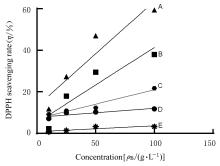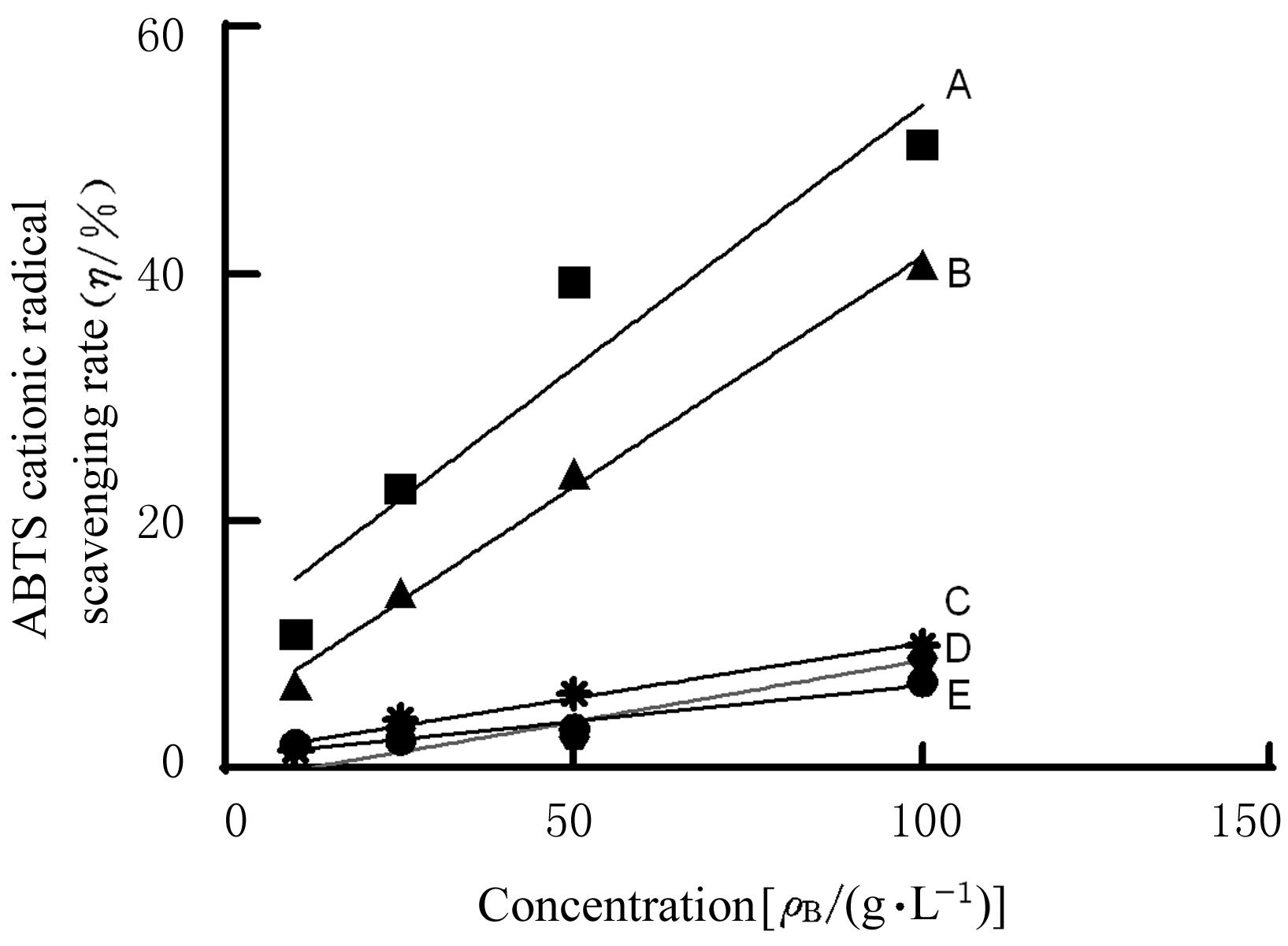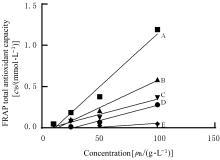| 1 |
BRAICU C, TOMULEASA C, MONROIG P, et al. Exosomes as divine messengers: are they the Hermes of modern molecular oncology?[J]. Cell Death Differ, 2015, 22(1): 34-45.
|
| 2 |
FÉVRIER B, RAPOSO G. Exosomes: endosomal-derived vesicles shipping extracellular messages[J]. Curr Opin Cell Biol, 2004, 16(4): 415-421.
|
| 3 |
PEGTEL D M, COSMOPOULOS K, THORLEY-LAWSON D A, et al. Functional delivery of viral miRNAs via exosomes[J]. Proc Natl Acad Sci USA, 2010, 107(14): 6328-6333.
|
| 4 |
DAD H A, GU T W, ZHU A Q, et al. Plant exosome-like nanovesicles: emerging therapeutics and drug delivery nanoplatforms[J]. Mol Ther, 2021, 29(1): 13-31.
|
| 5 |
SIES H, BERNDT C, JONES D P. Oxidative stress[J]. Annu Rev Biochem, 2017, 86: 715-748.
|
| 6 |
吴冬梅, 赵 旭, 汪 坤, 等. 大黄对脑出血大鼠的保护作用[J].郑州大学学报(医学版),2021,56(2):258-265.
|
| 7 |
GULCIN İ. Antioxidants and antioxidant methods: an updated overview[J].Arch Toxicol,2020,94(3).DOI:10.1007/S00204-020-02689-3 .
doi: 10.1007/S00204-020-02689-3
|
| 8 |
王 荣, 罗 倩, 冯 怡. DPPH、ABTS和FRAP微量法测定山柰酚的抗氧化能力[J]. 广州化工, 2021, 49(3): 58-59.
|
| 9 |
LI D, YAO X L, YUE J X, et al. Advances in bioactivity of microRNAs of plant-derived exosome-like nanoparticles and milk-derived extracellular vesicles[J]. J Agric Food Chem, 2022, 70(21): 6285-6299.
|
| 10 |
BRUNO S P, PAOLINI A, D'ORIA V, et al. Extracellular vesicles derived from Citrus sinensis modulate inflammatory genes and tight junctions in a human model of intestinal epithelium[J]. Front Nutr, 2021, 8: 778998.
|
| 11 |
CAI Y, ZHANG L X, ZHANG Y J, et al. Plant-derived exosomes as a drug-delivery approach for the treatment of inflammatory bowel disease and colitis-associated cancer [J]. Pharmaceutics, 2022, 14(4): 822.
|
| 12 |
KUMARAN A, JOEL KARUNAKARAN R. Antioxidant and free radical scavenging activity of an aqueous extract of Coleus aromaticus [J]. Food Chem, 2006, 97(1): 109-114.
|
| 13 |
CYR A R, DOMANN F E. The redox basis of epigenetic modifications: from mechanisms to functional consequences[J]. Antioxid Redox Signal, 2011, 15(2): 551-589.
|
| 14 |
LIU B L, LU Y Z, CHEN X Y, et al. Protective role of shiitake mushroom-derived exosome-like nanoparticles in D-galactosamine and lipopolysaccharide-induced acute liver injury in mice[J]. Nutrients, 2020, 12(2): 477.
|
| 15 |
ZHU M L, DAI X F. Maintenance of translational elongation rate underlies the survival of Escherichia coli during oxidative stress[J]. Nucleic Acids Res, 2019, 47(14): 7592-7604.
|
| 16 |
李思敏, 何凤军, 秦琳茜, 等. 药食两用植物细胞外囊泡样纳米粒的制备和性能研究[J]. 药学学报, 2021, 56(8): 2086-2092.
|
| 17 |
MITTELBRUNN M, SÁNCHEZ-MADRID F. Intercellular communication: diverse structures for exchange of genetic information[J]. Nat Rev Mol Cell Biol, 2012, 13(5): 328-335.
|
| 18 |
O’BRIEN K, BREYNE K, UGHETTO S, et al. RNA delivery by extracellular vesicles in mammalian cells and its applications[J]. Nat Rev Mol Cell Biol, 2020, 21(10): 585-606.
|
| 19 |
SATO K, MENG F Y, GLASER S, et al. Exosomes in liver pathology[J]. J Hepatol, 2016, 65(1): 213-221.
|
| 20 |
ZHENG J S, SHARP S J, IMAMURA F, et al. Association of plasma biomarkers of fruit and vegetable intake with incident type 2 diabetes: epic-InterAct case-cohort study in eight European countries[J]. BMJ, 2020, 370: m2194.
|
| 21 |
ZHENG J W, TIAN X X, XU B G, et al. Collagen peptides from swim bladders of giant croaker (Nibea japonica) and their protective effects against H2O2-induced oxidative damage toward human umbilical vein endothelial cells[J]. Mar Drugs, 2020, 18(8): 430.
|
| 22 |
ZHAO W J, BIAN Y P, WANG Q H, et al. Blueberry-derived exosomes-like nanoparticles ameliorate nonalcoholic fatty liver disease by attenuating mitochondrial oxidative stress[J]. Acta Pharmacol Sin, 2022, 43(3): 645-658.
|
| 23 |
LI H Y, WANG Y, SHAO S M, et al. Rabdosia serra alleviates dextran sulfate sodium salt-induced colitis in mice through anti-inflammation, regulating Th17/Treg balance, maintaining intestinal barrier integrity, and modulating gut microbiota[J]. J Pharm Anal, 2022, 12(6): 824-838.
|
| 24 |
DENG Z B, RONG Y, TENG Y, et al. Broccoli-derived nanoparticle inhibits mouse colitis by activating dendritic cell AMP-activated protein kinase[J]. Mol Ther, 2017, 25(7): 1641-1654.
|
| 25 |
WANG B M, ZHUANG X Y, DENG Z B, et al. Targeted drug delivery to intestinal macrophages by bioactive nanovesicles released from grapefruit[J]. Mol Ther, 2014, 22(3): 522-534.
|
| 26 |
RAIMONDO S, NASELLI F, FONTANA S, et al. Citrus limon-derived nanovesicles inhibit cancer cell proliferation and suppress CML xenograft growth by inducing TRAIL-mediated cell death[J]. Oncotarget, 2015, 6(23): 19514-19527.
|
 )
)









